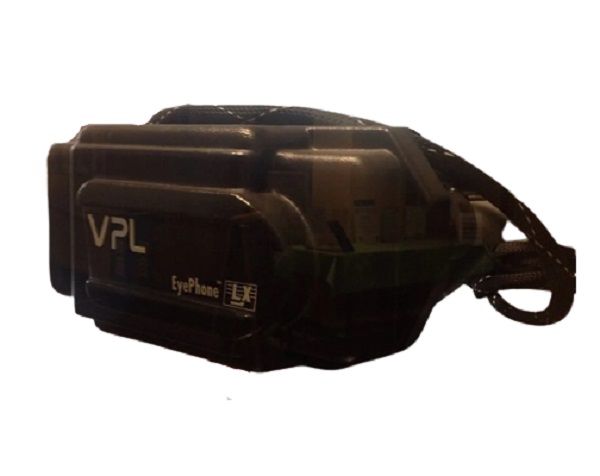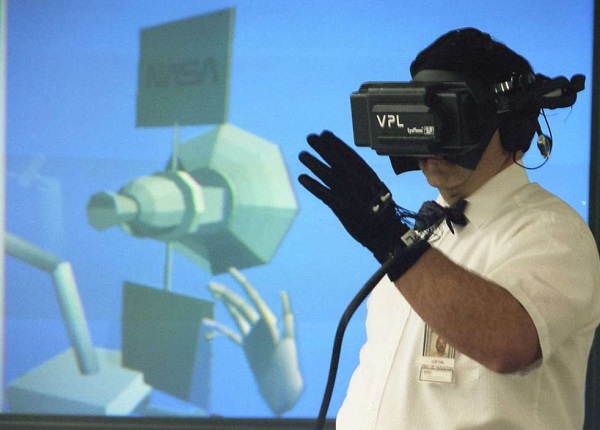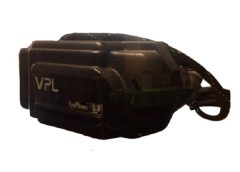
Headset: LX
Manufacturer: VPL Research Inc
Resolution: Color LCD, 442X238 elements
Weight: 2.5 lbs
Field of view: 108 HX76 V, custom optics
Video in: NTSC
Cost: $9,150 (£6,791)
Launch Date: March 1992
Estimated Value: $4-6,000
Other Features: Uses fresnel lens to minimize weight, Includes Polhemus Isotrak head-tracking system.

Experimental apparatus at the CAVE Lab included a Silicon Graphics 4D 210/VGX, a Silicon Graphics 4D 310/VGX, an Apple Macintosh IIfx, and a Compaq 486c portable computer. Proprietary hardware and software supplied by VPL Research Inc. consisted of VPL LX eyephones, the eyephone control unit, standard VPL data gloves, data glove control unit, VID/IO video signal splitters, and POLHEMUS Isotrack 3-space tracking devices. The software used to create the static virtual worlds was RB2 Swivel. The software that controlled the virtual reality operation was VPL’s Body Electric and the real time renderingsoftware used on the Silicon Graphics computers was VPL’s Isaac. The Compaq 486c portable computer was used to conduct the CAI portion of the experiment, using course- ware authored with Asymetrix Toolbook.
VPL developed the Microcosm system hosted by a Macintosh Quadra 950 with graphics accelerator boards (manufactured by Division, but sold exclusively by VPL). The graphics boards were essentially the dView boards with a Macintosh rather than a PC interface.
